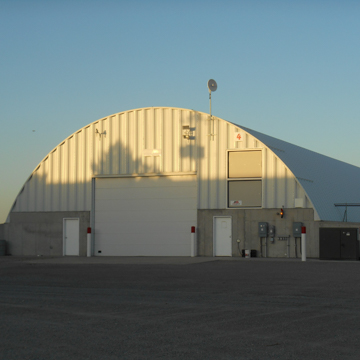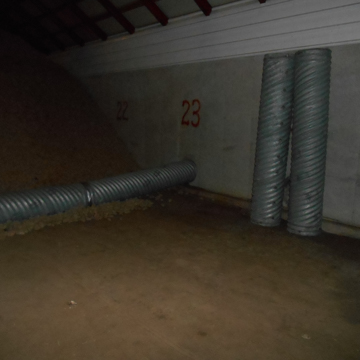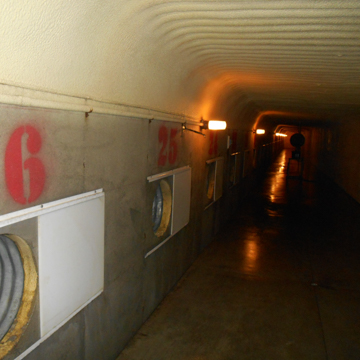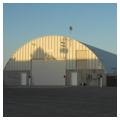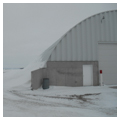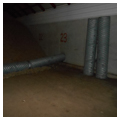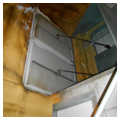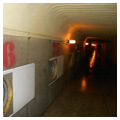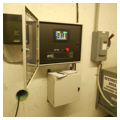Idaho produces up to one third of the nation’s potatoes and they are the state’s most profitable agricultural commodity, generating nearly a billion dollars annually. Thus, potato storage cellars are common on many southern Idaho’s farms. Although the state produces over 30 varieties, its most popular are the Russet Burbank and Russet Norkotah, used for baking, french fries, and processed potatoes; southern Idaho’s rich volcanic soil assures their distinctive taste. Since potatoes can be stored for nearly a year after harvesting, modern cellars are computerized refrigeration units that change in temperature, humidity, and air composition depending on the time of year and date of delivery.
Idaho’s first potato cellars consisted of simple, dirt-roofed, half-buried structures that used simple passive cooling measures such as earth mass cooling and straw bale roof insulation to maintain near 60-degree temperatures in order to minimize sprouting and ensure the right starch-sugar-water ratios. As sprouting and high water content can render the potato inedible, the interior climate conditions of these half-buried cellars proved unreliable and inflexible for a high-risk industry. Some of these cellars are still used today to store seed potatoes, where quality of taste is not as critical. Unlike grain elevators, potato cellars are not centrally located in nearby towns, but rather located on individual farms.
In the early 1970s, the demand for greater yields of high-grade potatoes to supply the rapidly expanding fast-food industry necessitated more sophisticated storage methods. The potato industry converted to larger steel storage units with changeable environmental controls. Insulated metal, arch-roofed quonset huts and steel, gable-roofed buildings proved to deliver a more consistent grade of potato ready at any time during the year depending on the needs of the market.
The simpler, arched-roof quonset hut is the more commonly used building type. The pre-assembled, lightweight, self-supporting structure has a semicircular cross section of corrugated galvanized steel. Concrete plenums (air ducts), measuring roughly 7 feet high by 4 feet wide and running the length of the building, act as buttresses. Modern, active environmental control systems control humidity, temperature, and air composition in order to optimize taste and increase yields. Like the pre-1970s root cellars, dirt is piled along the sides of the structure roughly 6 feet high so the earth’s consistent, 50- to 55-degree thermal mass keeps the potatoes from freezing in the winter and overheating in the fall and summer. Spray-on polyurethane ceiling insulation holds the air temperature steady. Natural ventilation helps conserve energy and is activated by computerized operable openings when outdoor temperature and humidity levels are consistent with the desired indoor temperature and humidity levels.
Individual HVAC units can either be portable truck units that are rented when needed or attached to the concrete plenums. Portable, 18-inch-diameter, corrugated tubes with vent holes plug into the concrete plenum to deliver fresh air directly at the bottom of the potato pile. This air rises through the potato pile into the upper space of the quonset hut, which acts as the return air plenum. Fans placed in the large concrete plenum and upper ceiling keep the air in constant circulation. In order to inhibit sprouting, which degrades the potato, chloropropham in aerosol form is injected through the plenums by special combustion units.
Temperature and humidity needs change between harvest and release depending on a number of market and disease-management factors. For this, temperatures can range from 36 to 60 degrees with humidity levels between 75 to 95 percent. Immediately after the harvest—a traumatic time for the potato—humidity levels need to be around 95 percent to facilitate healing. Temperature and humidity can be controlled within the structure or, in today’s mobile society, with a phone app that can be activated anywhere in the world.
References
Cabent, Stephen, potato broker and farmer. Interview with author, July 26, 2015, Blackfoot, Idaho.
Pahl, Jeff, Pahl Farms. Interview with author, January 26, 2016, American Falls, Idaho.
Stark, Jeffry, and Stephen Love. Potato Production Systems. Moscow: University of Idaho Agricultural Communications, 2003.




















